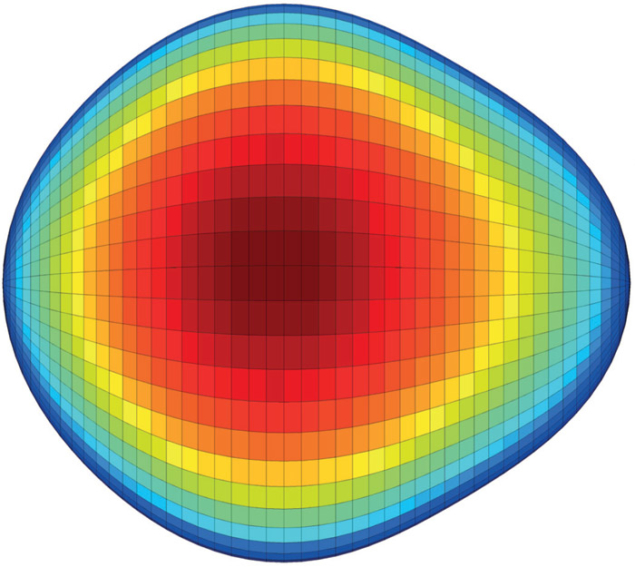
Most atomic nuclei that exist naturally are not spherical but have the shape of a rugby ball. While state-of-the-art theories are able to predict this behaviour, the same theories have predicted that for some particular combinations of protons and neutrons, nuclei can also assume an asymmetrical shape like a pear, with more mass at one end of the nucleus than the other. Now an international team studying radium isotopes at CERN’s ISOLDE facility has found that some atomic nuclei can indeed take on this unusual shape.
Most nuclear isotopes predicted to have pear shapes have for a long time been out of reach of experimental techniques. In recent years, however, the ISOLDE facility has demonstrated that heavy, radioactive nuclei, produced in high-energy proton collisions with a uranium-carbide target, can be selectively extracted before being accelerated to 8% of the speed of light. The beam of nuclei is directed onto a foil of isotopically pure nickel, cadmium or tin where the relative motion of the heavy accelerated nucleus and the target nucleus creates an electromagnetic impulse that excites the nuclei.
By studying the details of this excitation process it is possible to infer the nuclear shape. This method has now been used successfully to study the shape of the short-lived isotopes 220Rn and 224Ra. The data show that while 224Ra is pear shaped, 220Rn does not assume the fixed shape of a pear but rather vibrates about this shape.
The findings from the teams at ISOLDE are in contradiction with some nuclear theories and will help others to be refined. The experimental observation of nuclear pear shapes is also important because it can help in experimental searches for atomic electric dipole moments (EDMs). The Standard Model of particle physics predicts that the value of the atomic EDM is so small that it will lie well below the current observational limit. However, many theories that try to refine the model predict values of EDMs that should be measurable. Testing these theories requires improved measurements, the most sensitive being to use exotic atoms whose nuclei are pear shaped.
The new measurements will help to direct the searches for EDMs currently being carried out in North America and in Europe, where new techniques are being developed to exploit the special properties of radon and radium isotopes. The expectation is that the data from the nuclear-physics experiment at ISOLDE can be combined with results from atomic-trapping experiments that measure EDMs to make the most stringent tests of the Standard Model.
Further reading
L P Gaffney et al. 2013 Nature 497 199.





